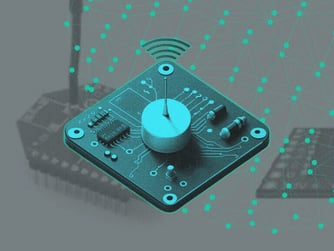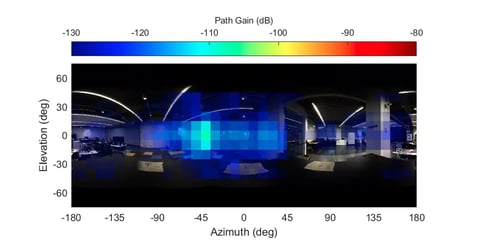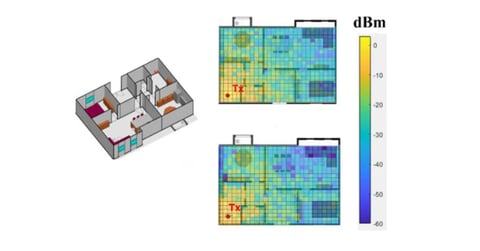Auto-Radar Drive Scenario Simulation: Increasing Realism with Multipath, Diffuse Scattering, and Micro-Doppler
Learn how Remcom’s WaveFarer® Radar Simulation Software uses ray-tracing to simulate virtual drive scenarios and predict radar returns as a system moves through an environment with vehicles, roadway structures, pedestrians, and other objects.
Drive scenario simulation can offer significant benefits for early testing of sensor designs and as a complement to operational road tests. However, focusing on mmWave radar sensors, there are several challenges to simulation of a realistic automotive scenario:
-
Near-field conditions that invalidate traditional RCS concepts
-
Densely-faceted vehicle models; complex for traditional “propagation” ray-tracers
-
Complex multipath from roadside structures (guard rails, signs, parked vehicles, etc.)
-
Dynamic scenarios with multiple vehicles in motion, potentially with moving parts
This presentation uses WaveFarer to describe these challenges, possible solutions, and recent R&D to address key aspects of the problem, including target scattering, multipath and clutter, and micro-Doppler from motion such as the moving limbs of a walking pedestrian.
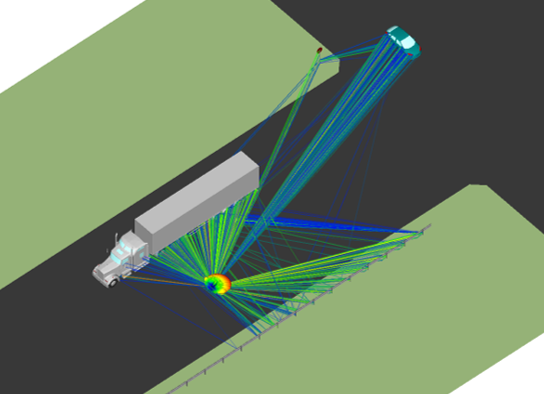
PO Scatter and UTD interactions only
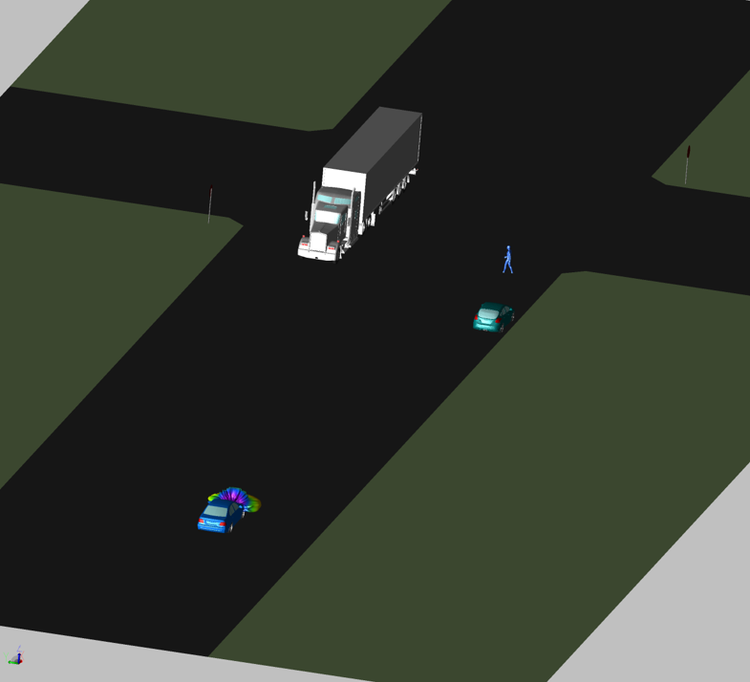
Pedestrian crossing as radar host vehicle approaches.
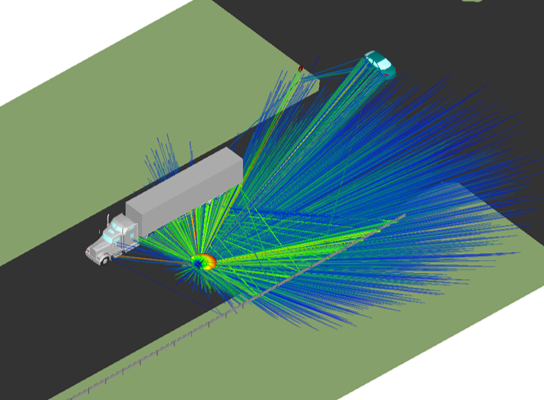
With Diffuse Scatter
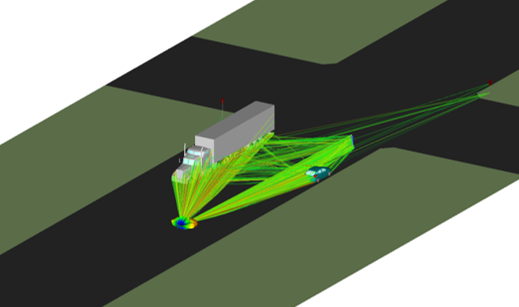
Dominant paths show interactions with vehicle, pedestrian, and stop signs.
